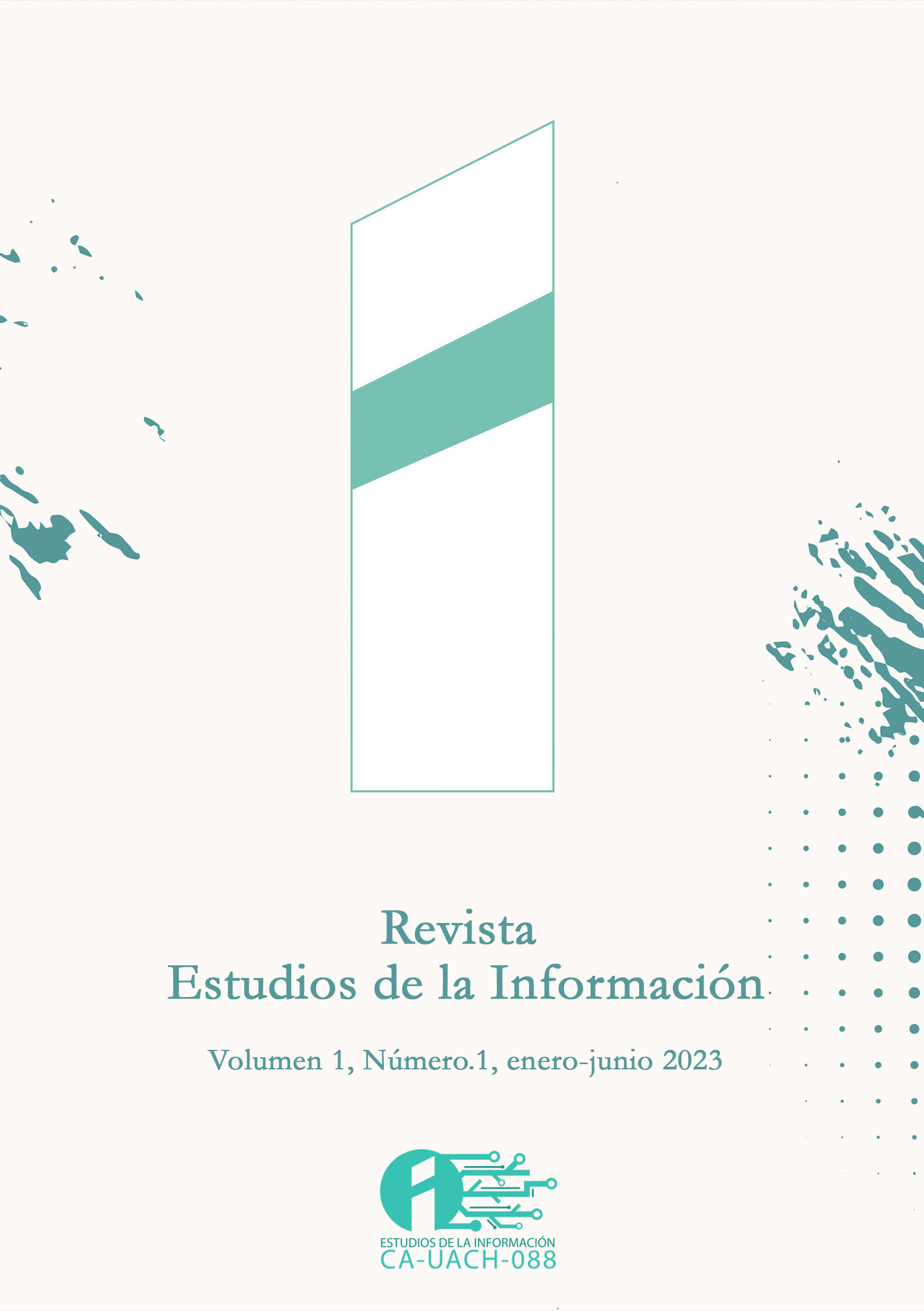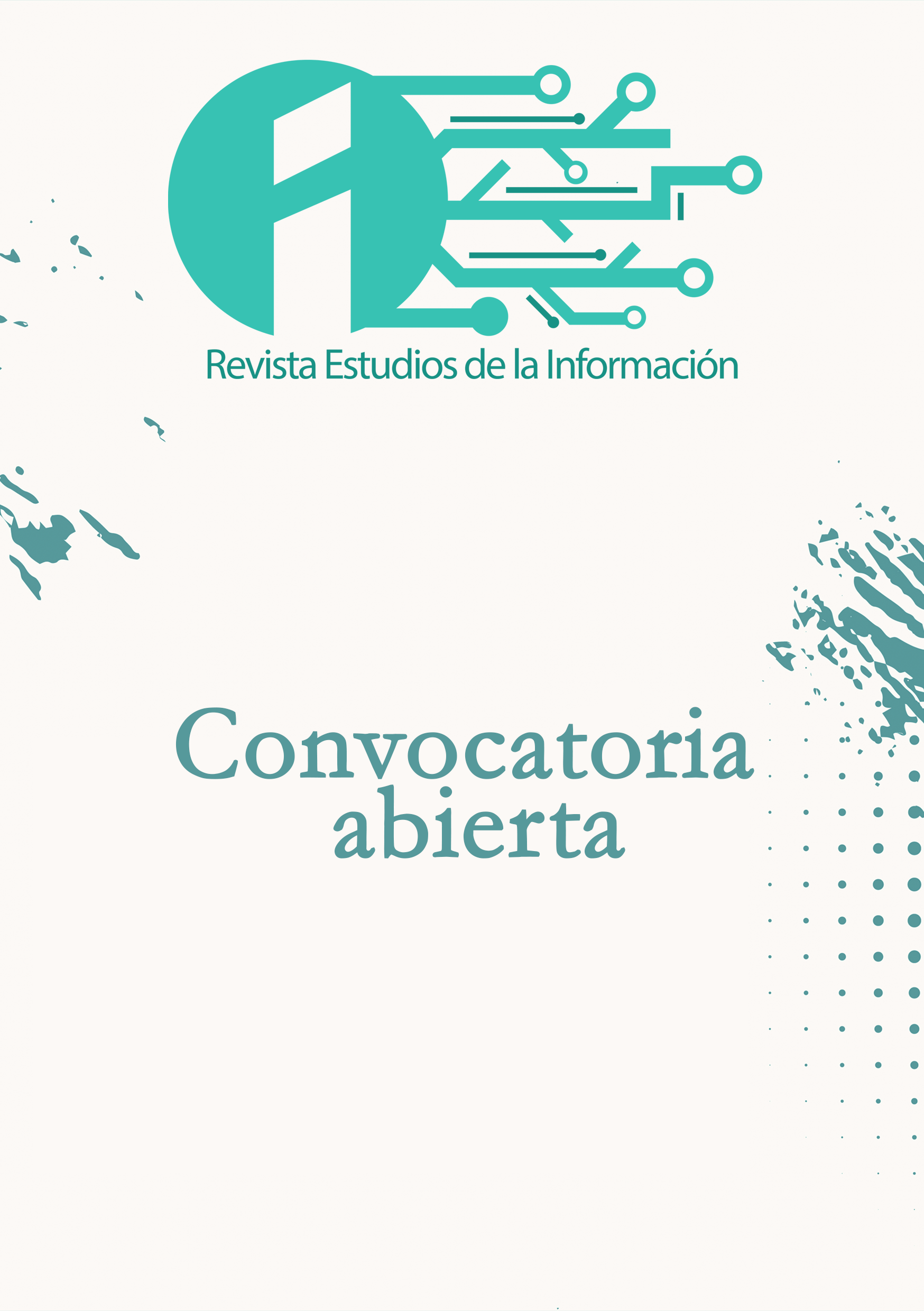Identification of linguistic barriers/competences in scientific communication of university researchers
DOI:
https://doi.org/10.54167/rei.v1i1.1183Keywords:
linguistic barriers, linguistic competence, scientific production, scientific communication, university professors, university researchersAbstract
This article proposes the generation of a model to identify linguistic barriers / competences (BL/CL) in scientific communication in university researchers, creating through the review of the scientific literature a four-dimensional taxonomy: (1) conditions of the context; (2) expression and interpretation of concepts; (3) writing and structuring of scientific documents; and (4) psychological, personality and cultural aspects. For data collection, a survey was used where an instrument designed according to the taxonomy described above was applied to a random and stratified sample, calculated with 95% confidence and a margin of error of 8%, of 70 researchers belonging both to the Autonomous University of Chihuahua (UACH) and the National System of Researchers (SNI) of Mexico, distributed in seven scientific disciplines. The study allowed to analyze the conditions of the participants comparing their BL/CL and to conclude mainly that the linguistic competence (CL) of the researchers significantly facilitates the production of scientific texts in the realization of science communication activities, also finding significant differences in CL according to the disciplinary area and the level of mastery of a second language, but evidencing that the gender, age or level in the SNI do not point to significant differences in the CL of the researchers.
Downloads
References
Allen, C., y Penuel, W. (2015). Studying teachers’ sense making to investigate teachers’ responses to professional development focused on new standards. Journal of Teacher Education, 66(2), 136-149. https://doi.org/10.1177/0022487114560646
Amano, T., González, J. P., y Sutherland, W. J. (2016). Languages are still a mayor barrier to global Science. Plos Biology, 14(12), 1-8. https://doi.org/10.1371/journal.pbio.2000933
Badia, A., y Gómez, F. (2014). Condiciones del contexto instruccional que afectan el diseño de la enseñanza del profesor universitario. Educación XX1, 17(2), 169-192. https://doi.org/10.5944/educxx1.17.2.11484
Berg, N. (2016). Boundary-crossing competences of educators and researchers in working on educational issues. Journal of Finnish Universities of Applied Sciences. https://bit.ly/40xiaMa
Burns, T. W., Connor, J. O., y Stocklmayer, M. (2009). Science communication: a contemporary definition. Public Understand of Science, 12(2), 183–202.
Cameron, C., Lee, H. Y., Anderson, C. B., Trachtenberg, J., & Chang, S. (2020). The role of scientific communication in predicting science identity and research career intention. PloS One, 15(2), e0228197. https://doi.org/10.1371/journal.pone.0228197
Chen Chung, L., Cai Ting, W., Hsin Yi, C., Ming Hua, C., Po Han, L., Shih Hsun, F.C., Chih Wei, Y., y Fu Kwun, H. (2022). Augmenting the effect of virtual labs with "teacher demonstration" and "student critique" instructional designs to scaffold the development of scientific literacy. Instructional Science, (50), 303–333. https://doi.org/10.1007/s11251-021-09571-4
De la Hoz, A., Cubero, J., Melo, L., Durán-Vinagre, M. A., Sánchez, S. (2021). Analysis of digital literacy in health through active university teaching. Int. J. Environ. Res. Public Health, (18), 6674. https://doi.org/10.3390/ijerph18126674
Del Pozo, L.A. (2017). La redacción académica y la conciencia lingüística. Revista de Investigación Apuntes Universitarios, 7(2), 90-93. http://dx.doi.org/10.17162/au.v7i2.174
DeVellis, R. F. (2003). Scale development. Theory and applications. Second edition. Thousand Oaks, California: Sage Publications.
Di Bitetti, M. S., y Ferreras, J. A. (2017). Publish (in English) or perish: The effect on citation rate of using languages other than English in scientific publications. Ambio, 46(1), 121-127.
Ebadi, A., y Schiffauerova, A. (2016). How to boost scientific production? A statistical analysis of research funding and other influencing factors. Scientometrics, 106(3), 1093–1116. https://doi.org/10.1007/s11192-015-1825-x
Eikeland, O. (2013). Symbiotic learning systems: Reorganizing and integrating learning efforts and responsibilities between Higher Educational Institutions (HEIs) and work places. Journal of the Knowledge Economy, 4(1), 98–118. https://doi.org/10.1007/s13132-012-0123-6
Eguaras, M. (2014). Manual de estilo: ¿Por qué estandarizar y armonizar criterios? https://bit.ly/40DkIsk
Englander, K. (2015). Writing and Publishing Science Research Paper in English. English for Specific Purposes, (39), 75-82.
Espino Datsari, S. (2015). La enseñanza de estrategias de escritura y comunicación de textos científicos y académicos a estudiantes de posgrado. Revista Mexicana de Investigación Educativa, 20(66), 959-976.
Garza-Almanza, V. (2014). Los estudiantes mexicanos de posgrado en los estados unidos y la escritura científica consideraciones sobre la enseñanza y práctica de la escritura científica en México. CULCyT, 11(52), 6-27.
Gálvez-Diaz, E. G. (2022). Competencias investigadoras y producción científica en docentes de la Facultad de Ingeniería en Universidad Privada-Chiclayo. Revista RedCA, 5(14), 141-156.
Hempel, K. G. (2013). Can scholarly communication be multilingual? a glance at language use in US classical archaeology. Humanities, (2), 128-146. https://doi.org/10.3390/h2020128
Kathpalia, S. S., Ong, K. K. W., & Leong, A. P. (2020). Communication needs of science graduate students. RELC Journal, 51(2), 227–243. https://doi.org/10.1177/0033688218822152
Klucevsek, K.M., y Brungard, A.B. (2016). Information Literacy in Science Writing: How Students Find, Identify, and Use Scientific Literature. International Journal of Science Education, 38(17), 2573- 2595.
Kourilova-Urbanczik, M. (2012). Some linguistic and pragmatic considerations affecting science reporting in english by non-native speakers of the language. U.S. National Library of Medicine, Interdisciplinary Toxicology, 5(2), 105-115. https://doi.org/10.2478/v10102-012-0018-1
Kyvik, S., y Aksnes, D.W. (2015). Explaining the increase in publication productivity among academic staff: a generational perspective. Studies in Higher Education, 40(8), 1438-1453. https://doi.org/10.1080/03075079.2015.1060711
Lederman, A., y Katsman, D. (2015). Advancing science by overcoming language barriers. MultiLingual. https://bit.ly/42zGVsW
Lee, O., Quinn, H., y Valdés, G. (2013). Science and language for english language learners in relation to next generation science standards and with implications for common core state standards for English language arts and mathematics. Educational Researcher, 42(4), 223-233.
Lewenstein, B. V., & Baram-Tsabari, A. (2022). How should we organize science communication trainings to achieve competencies? International Journal of Science Education, Part B: Communication & Public Engagement, 12(4), 289–308. https://doi.org/10.1080/21548455.2022.2136985
Li, Y., y Guo, M. (2021) Scientific literacy in communicating science and socio-scientific issues: prospects and challenges. front. Psychol., (12) 758000. https://doi.org/10.3389/fpsyg.2021.758000
Mari Mutt, J.A. (2014). Manual de redacción científicas. Universidad de Puerto Rico.
Naveed, M.A., Iqbal, J., Asghar, M.Z., Shaukat, R., Seitamaa-Hakkarainen, P. (2023). Information literacy as a predictor of work performance: the mediating role of lifelong learning and creativity. Behav. Sci. 2023, 13(24), 1-17. https://doi.org/10.3390/bs13010024
Nerghes A, Mulder B, Lee J-S (2022). Dissemination or participation? Exploring scientists’ definitions and science communication goals in the Netherlands. PLoS ONE, 17(12): e0277677. https://doi.org/10.1371/journal.pone.0277677
Núñez-Guerrero, Y., y Rodríguez-Monroy, C. (2014). Árboles de clasificación para jerarquizar los recursos intangibles asociados a la innovación en las instituciones de educación superior latinoamericanas. Interciencia, 39(4), 149-155.
Oberbauer, A.M., Lai, E., Kinsey, N.A., y Famula, T. (2021). Enhancing student scientific literacy through participation in citizen science focused on companion animal behavior. Transl. Anim. Sci., (3)1-10. https://doi.org/10.1093/tas/txab131
Organización para la Cooperación y el Desarrollo Económicos (2021). Science, Technology and Innovation Outlook 2021: Times of Crisis and Opportunity. OCDE https://doi.org/10.1787/75f79015-en
Ortega y Gasset, J. (2007). Misión de la universidad. Biblioteca Nueva.
Ritchie, T. S., Rossiter, D. L., Opris, H. B., Akpan, I. E., Oliphant, S., & McCartney, M. (2022). How do STEM graduate students perceive science communication? Understanding science communication perceptions of future scientists. PLoS ONE, 17(10), 1–25. https://doi.org/10.1371/journal.pone.0274840
Riveros Diegues, N.A. (2020). Gramática y escritura: hacia un vínculo consciente en las prácticas lingüísticas: Análisis del tratamiento gramatical en los dispositivos curriculares de Chile [Tesis de doctorado, Universidad de Barcelona].
Rodríguez-Menéndez, M., González-Cantalapiedra, Z., y González-Polo, M. (2016). Problemas frecuentes en la redacción de artículos científicos. EduSol, 16(57), 137-147.
Sabaj, O. (2009) Descubriendo algunos problemas en la redacción de artículos de investigación. Signos, 42(69), 107-127.
Shi, L. (2012). Rewriting and Paraphrasing Source Texts in Second Language Writing. Journal of Second Language Writing, 21(2), 134-148.
Thabet, R.A. (2018). Cross-Cultural Corpus Study of the Use of Hedging Markers and Dogmatism in Postgraduate Writing of Native and Non-native Speakers of English, En K. Shaalanet al. (eds.). Intelligent Natural Language Processing: Trends and Applications, Studies in Computational Intelligence (pp. 677-710). Springer Professional.
Turégano, P. (2006). Una interpretación de la formación de conceptos y su aplicación en el aula. Ensayos, (21), 35-48.
Valladares, L. (2021). Scientific literacy and social transformation critical perspectives about science participation and emancipation. Science & Education, (30), 557–587. https://doi.org/10.1007/s11191-021-00205-2
Vergara-Mejía, A., Niño-Garcia, R., Zeta-Solis, L., Soto-Becerra, P., Al-kassab-Córdova, A., Pereyra-Elías, R., Cabieses, B., y Mezones-Holguin, E. (2022) Disparities in scientific research activity between doctors and nurses working in the Peruvian health care system: Analysis of a nationally representative sample. PLoS ONE, 17(9), e0273031. https://doi.org/10.1371/journal.pone.0273031
Zapata-Custodio, F.F., y Jiménez-Hernández, R. (2014). Cómo escribir documentos científicos: artículo original. Salud en Tabasco, 20(1), 21-23.
Downloads
Published
How to Cite
-
Abstract238
-
PDF (Español)257







